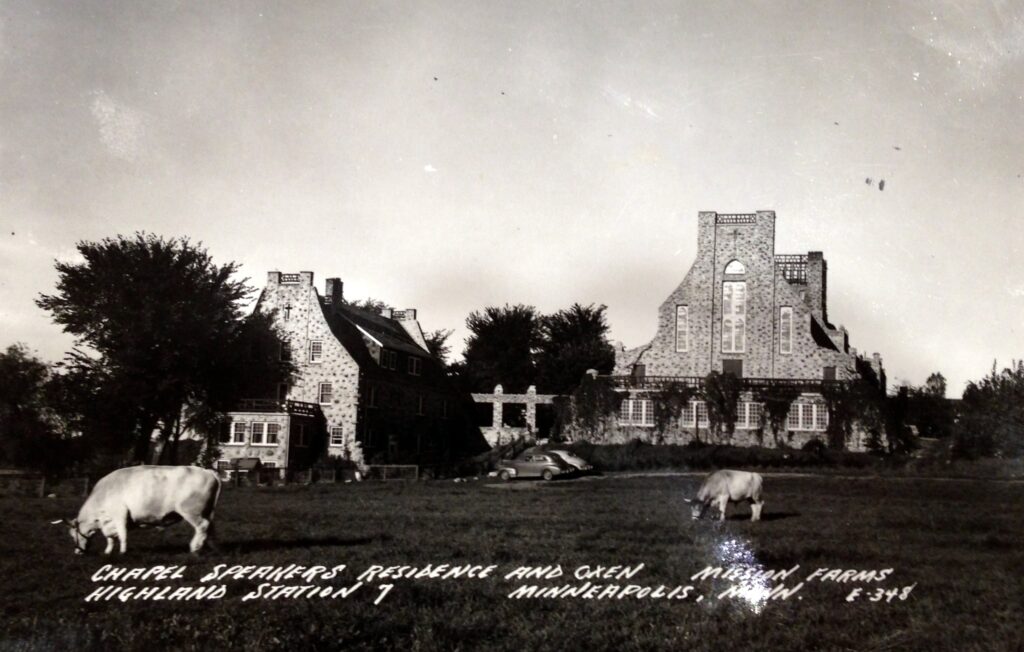Mission Farms on Medicine Lake, pt. 2
By Stacy Paulsen

Mission Farms also functioned as a locale for religious conferences, camps, and conventions. The first of these was the Northwestern Bible Conference in the summer of 1929. Over time, the programming expanded to include year round bible camps with activities like skating, sledding, and skiing. Additional structures were added, including a chapel, an amphitheater, the “Wigwam Inn,” a Western-style fort dormitory, a tepee village, multiple lodge buildings, and a handsome stone structure called the Speaker’s Residence (also known as Wallace Lodge). Two of these structures, the Speaker’s Residence and Smith Lodge, remain standing today.

In 1948, Reverend William E. Paul continued his commitment to helping people struggling with alcohol addiction at Mission Farms when he opened Pioneer House, the first private, residential chemical dependency treatment program in Minnesota. The site’s treatment programs were instrumental in the development of the “Minnesota Model” of chemical dependency treatment that became a model for programs nationwide.
In the 1960s, the Medicine Lake site was used as a skilled-care facility for men, and as a detoxification center in the 1970s. In the 1980s, Missions Inc. began providing services for battered women and children on the Mission Farms site. Today, Missions Inc. continues to provide care for individuals suffering from chemical dependency and domestic abuse at the idyllic Medicine Lake location — a continuous history of caring for others that now stretches over 125 years.